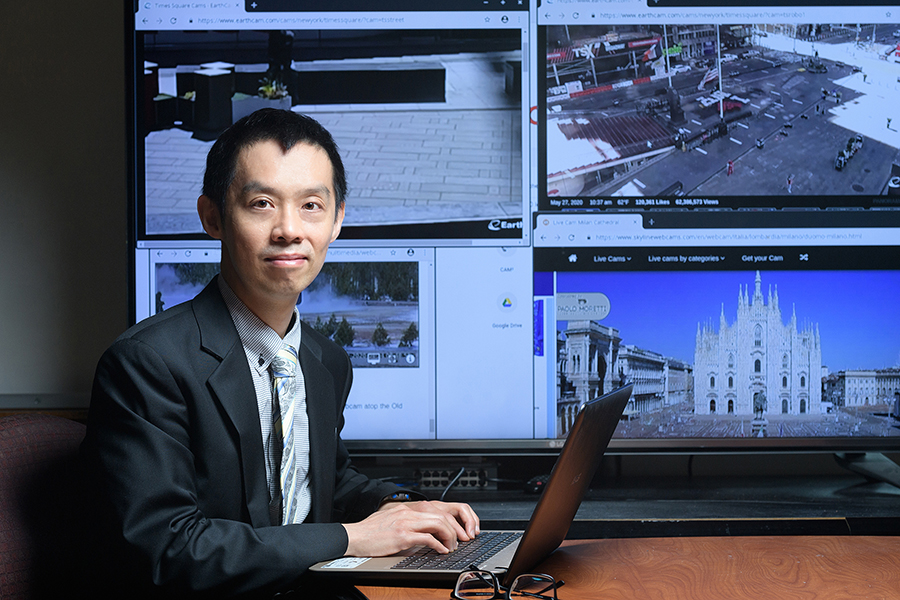How have people responded to COVID-19 restrictions around the world?
Public camera footage of how people have responded so far to COVID-19 social distancing guidelines in spaces such as tourist spots and busy street corners could help inform new policies as the pandemic progresses.
But that footage is scattered all over the internet.
Purdue University engineers built a website that pools together live footage and images from approximately 30,000 network cameras in more than 100 countries, making data easier to analyze.
The site has documented footage since March that could help evaluate the effectiveness of lockdowns and restrictions. Video and images captured by the system do not identify individuals – just the number of people in a public space from a distance. The system also does not use facial recognition technology.
Researchers and policymakers can visit the site cam2project.net to access the footage. The resource is described further in a paper pending publication and supported by a grant from the National Science Foundation
“Researchers already have the tools they need to analyze human behavior from video and photos, but this behavior can vary significantly depending on the context or culture of a place. We need extensive data to get those detailed insights, and this site provides that data,” said Yung-Hsiang Lu, a Purdue professor of Electrical and Computer Engineering.

A video by Lu’s lab explaining this resource is available on YouTube
Images and footage from network cameras, such as those overlooking city streets and squares, are publicly available on the internet. But because each website organizes and presents visual data differently, it would be challenging and tedious to sift through each network camera’s feed.
The system that Lu’s team developed automatically discovers thousands of network cameras in public spaces. After the system discovers cameras, a computer program saves image data and downloads videos about every 10 minutes. Data recorded from these cameras are sent to cloud data centers for processing.
The project has been allocated computational power and storage provided by the Argonne Leadership Computing Facility Cooley cluster located at the U.S. Department of Energy’s Argonne National Laboratory.
The discovered cameras are a subset of a much larger system developed in Lu’s lab in 2016, called the Continuous Analysis of Many CAMeras (CAM2). The CAM2 system is the world’s largest camera network, accessing more than 120,000 cameras worldwide in settings ranging from public parking garages to highways.
The cameras that Lu’s lab has discovered for studying the effects of COVID-19 restrictions focus on places typically dominated by pedestrians.
Lu and his collaborators have been using the system and artificial intelligence tools to see how policies have affected crowd size over time. The data also is helping to build models for human interactions and the spread of disease. Lu’s team received approval and protocol from the Institutional Review Board to conduct this study.
“How have people responded to policy changes? Were there sudden increases of crowds when the restrictions lifted, or were there gradual increases? Are there obvious patterns by countries or regions? These are the types of questions we hope to answer,” Lu said.
The system is based on several technologies protected by patents filed through the Purdue Research Foundation Office of Technology Commercialization
Co-PIs on this project include Purdue professors David Ebert, David Barbarash and Wei Zakharov. George Thiruvathukal, a professor at Loyola University Chicago and visiting professor at Argonne National Laboratory, is the project’s consultant for software development and data management.
Source: How have people responded to COVID-19 restrictions around the world?
